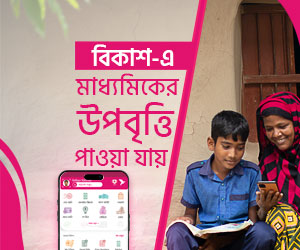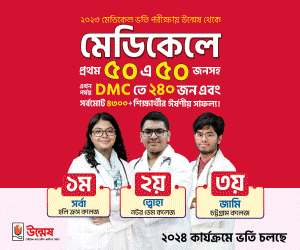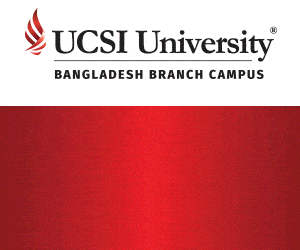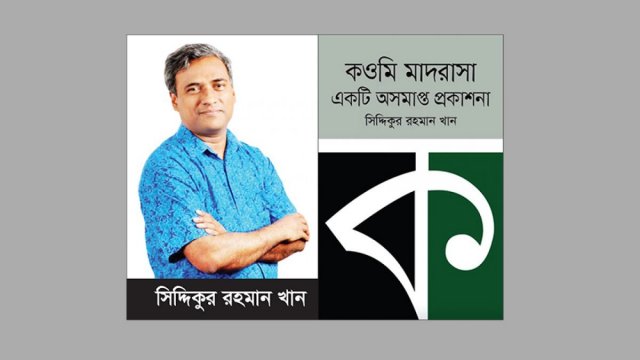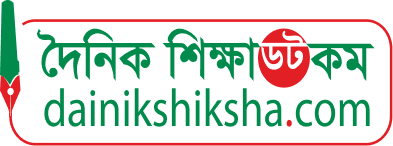At the time of independence, there were only 6 public universities in Bangladesh. At present a total of 38 public universities have been established. As the government funding in higher education sector is continually falling, we cannot expect many more public universities to come in future.
On the other hand, private universities are in high demand today. From the humble beginnings of the first private university in Bangladesh in 1993 with only 143 students, today the number of universities has increased to 91, catering to a mass of 0.3 million students or more.
In fact the expansion of higher education is a worldwide phenomenon in the mid 20th century. During this time, higher education has seen an increased number of students and institutions all over the world.
But the question remains whether higher education is truly necessary for the prosperity of a nation, and how much it contributes to economic development of the nation. Recent evidence suggests that higher education increases savings and investment, and also lead to a more entrepreneurial and civic society.
Skilled workforce contributes significantly to economic growth in both developed and developing countries. Hence a country definitely needs graduates who are better educated, more creative, and more international. To create these graduates who will serve our society and bring our country to prosperity, our universities must play a crucial role.
But the universities in Bangladesh still follow a traditional education system, which has been shown to be an ineffective system for producing graduates who are adequately prepared for handling the real world. It is time we make a bold move forward to change our education system to a more objective based, and interactive learning styled one.
How can we improve university teaching, and produce the kind of graduates that Bangladesh needs to be competitive on world markets? We can establish a national institute for Learning and Teaching in Higher Education, and there should be a centre of academic excellence in each university.
Excellence in teaching requires deep thought and often profound and subtle changes in the way we think about the nature of both teaching and learning. It is the 21st century now, everything around us has changed, and it is only natural that we need to bring a change to our age old teaching system.
I have been in the career of teaching for about forty years. I began my teaching career as most young teachers do, consciously modeling my teaching style on that of the teachers I’d had. And in my years of teaching I have not witnessed many teachers talking about teaching improvement, although teaching is what earns their bread and butter.
We see professors glow and roar about their new research ideas, but they never show the slightest excitement about new ideas in teaching. They are willing to spend day and night to write research papers, but very reluctant to develop a creative course for their students.
Our current system follows teacher-cantered instructions, where students put all of their focus on the teacher. This mode of instruction does not encourage the students to express themselves, ask questions, and direct their own learning.
The students become too dependent on the teacher’s teaching, and start to lose their own creative and critical capacities. On the other hand, when a classroom operates through student-cantered instructions, students and instructors share the same focus. Instead of listening to the teacher exclusively, students and teachers interact equally.
Group work is encouraged, and students learn to collaborate and communicate with one another. Students are more interested in active learning activities. Establishing a student-cantered educational system would bring about a paradigm shift in our system and will entail fundamental changes in teaching/learning practices in our country.
It might be that we need our own version, blending the better of the two instruction systems, which will serve our students best. For this we have to first develop our own understanding of teaching methods available, and create one that will meet the needs of our students.
Students’ academic performance in most of our public universities is assessed through a final examination and two or three class tests. Private universities do their assessment through one or two midterm and final examinations, and three or four class tests.
But such closed-book, timed exams only encourage memorising and not internalising course contents, and exist mostly for administrative and not educational reasons. Although they are a very convenient form of evaluation, but whether these are truly worth the educational costs is a question up for debate.
Open-book examinations remove the premium on memorisation of detail, but retain the time constraint. The assignment or term paper can facilitate deep learning as it does not impose a time limitation or require memorisation.
Instead the student can consult any sources and acquire a deeper knowledge base synthesise learning to solve a given problem. However, plagiarism is easier in this case. The take-home work with shorter time limits, often overnight, makes plagiarism a little more difficult.
There are now two popular methods of assessments, informative and summative. The goal of summative assessment is to evaluate student learning at the end of an instructional unit by comparing it against some standard or benchmark. Examples of summative assessments include: (i) midterm exam, (ii) final exam, (iii) project, etc. Formative assessments are generally low stakes, which means that they have low or no point value. Examples of formative assessments include asking students to: (i) draw a concept map in the class to represent their understanding of a topic, (ii) submit one or two sentences identifying the main point of a lecture, (iii) quizzes. Formative assessments help students identify their strengths and weaknesses and target areas that need work and help faculty recognise where students are struggling and thus address problems immediately. Formative assessments help teachers identify concepts that students are struggling to understand, skills they are having difficulty acquiring, or learning standards they have not yet achieved so that adjustments can be made to lessons, instructional techniques, and academic support. There is a saying about these two assessments: “When the cook tastes the soup that is formative assessment. When the customer tastes the soup, it is summative assessment.”
Teaching and learning is an ego-threatening task. Too much challenge to the ego, and students rebel or retreat; too little and they don’t progress: either way they don’t learn. When students know what they do well and what they need to work harder on, it can help them take greater responsibility over their own learning and academic progress.
But if we ask teachers to change their style of teaching and adopt a new model in teaching and learning without giving them much time for understanding it, they will react. Before implementing any new teaching and learning model, universities must arrange a series of training for teachers. Using technology in teaching and learning in higher education is also a great challenge. However, living in globalized and international environment, we cannot ignore the changes in higher education. When selecting among several teaching methods, it is best to choose the method that allows the most involvement in learning.
Writer : Vice Chancellor, East West University
Email: [email protected]

